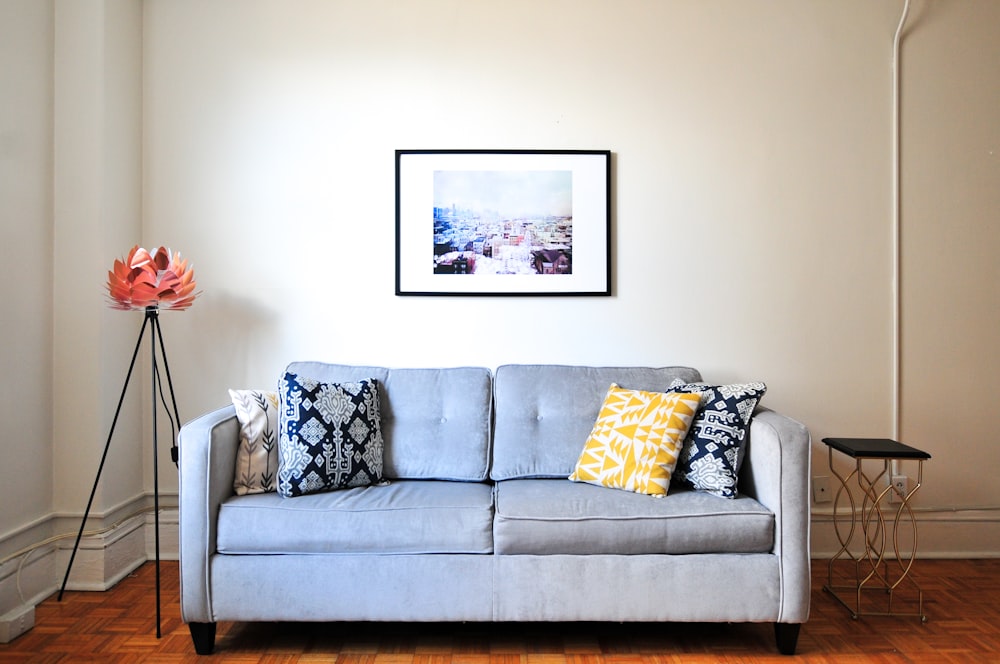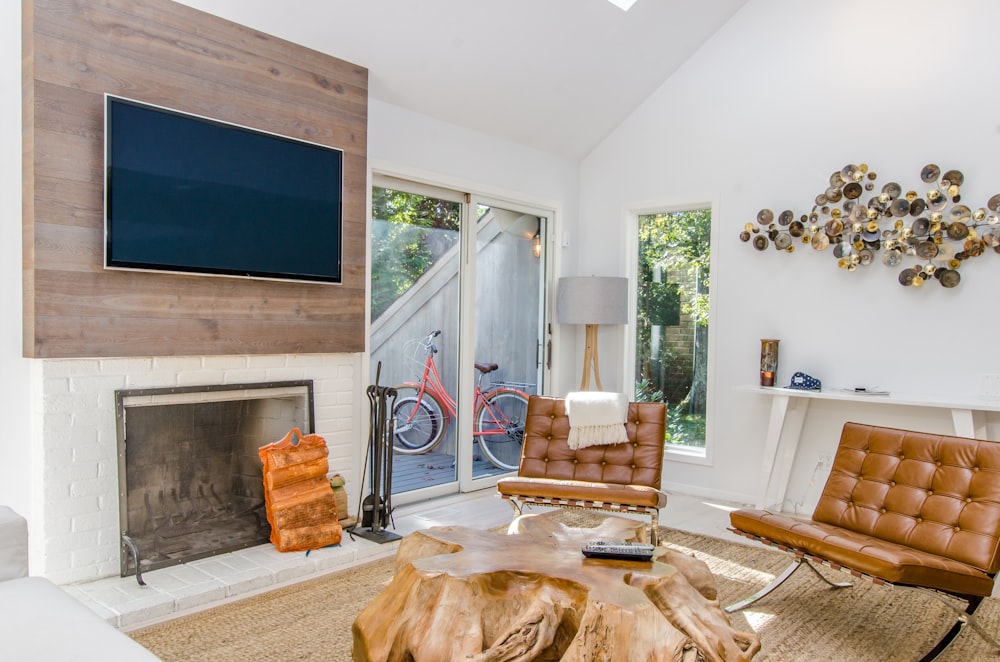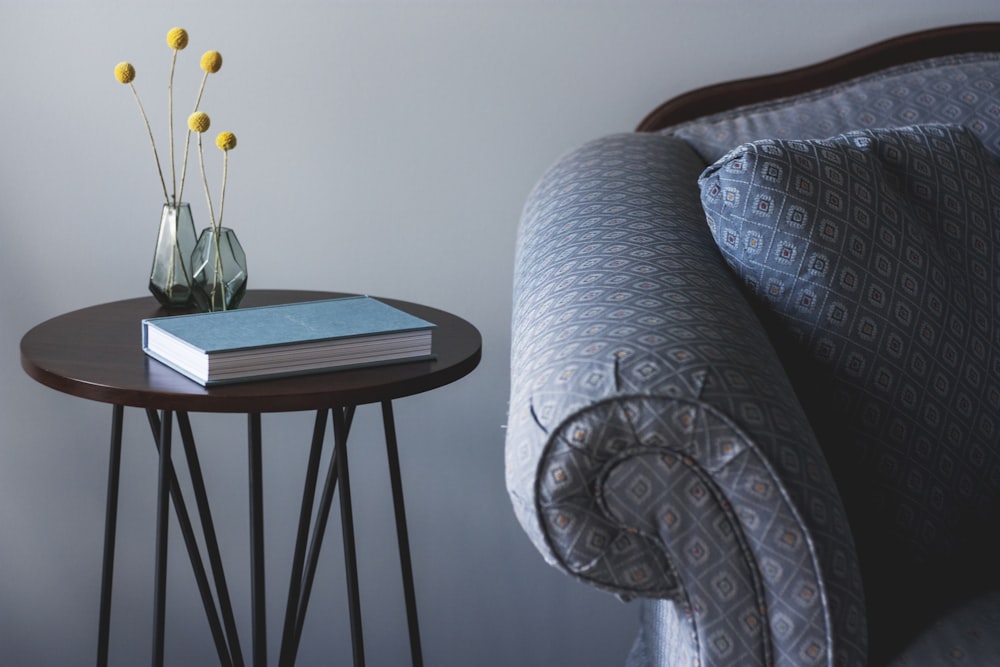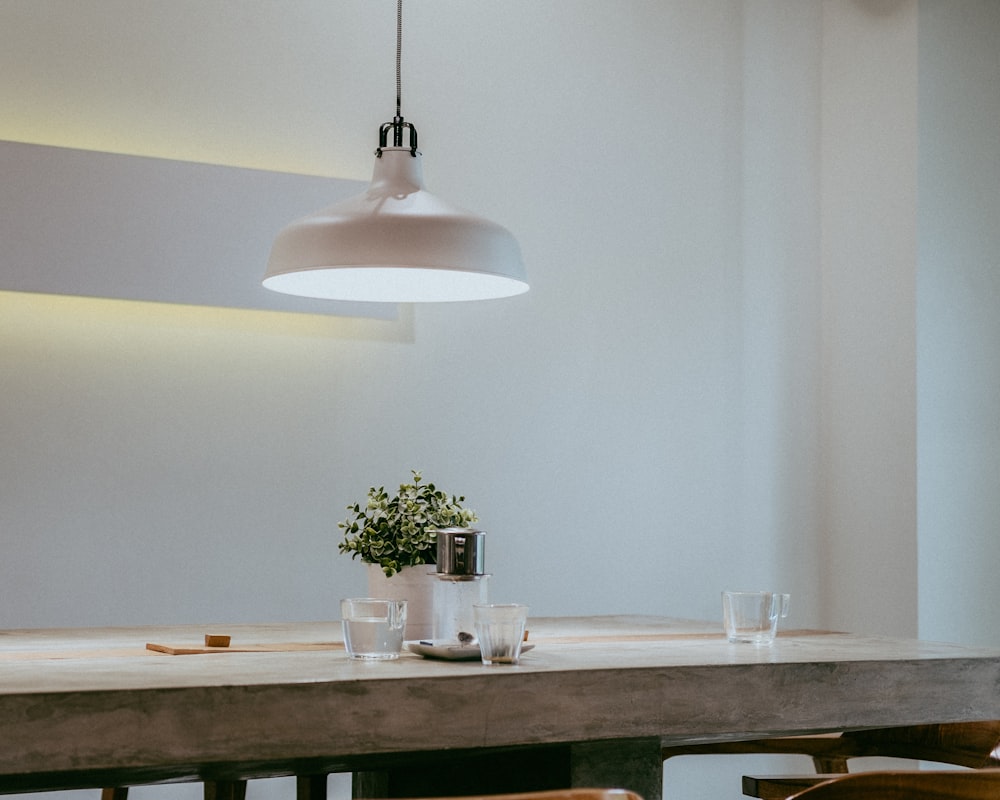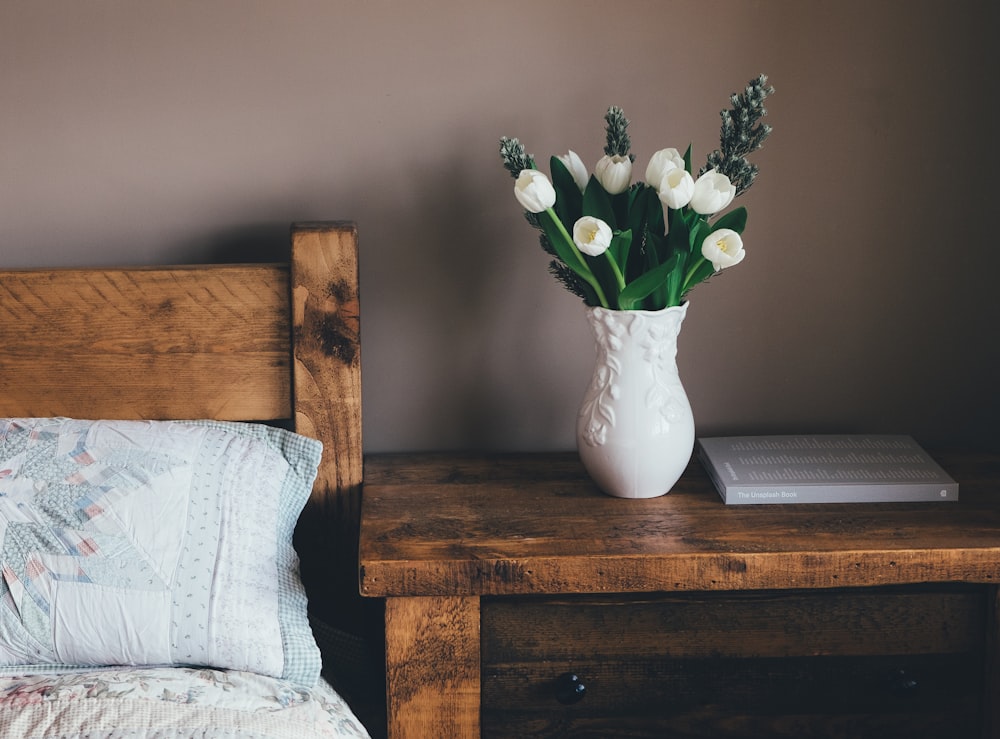Welcome to the world of minimalist design! In our cluttered and chaotic lives, creating a simplified and serene living space can be a breath of fresh air. Minimalism is not just a design style; it is a way of life that promotes mindfulness, intentionality, and well-being. By adopting minimalist design principles, you can transform your home into a peaceful sanctuary that encourages relaxation and clarity.
Key Elements for a Simplified Living Space
In this article, we will explore the key elements for a simplified living space through minimalist design, including decluttering techniques, color palettes, furniture selection, decor choices, lighting strategies, and more. You’ll learn how to create functional and tranquil spaces that reflect your personal style while eliminating excess and unnecessary distractions.
Whether you are starting from scratch or looking to revamp your current living space, these minimalist design principles will guide you towards a more simplified and aesthetically pleasing home. So, let’s dive in and discover the transformative power of minimalist design!
Understanding Minimalism
Defining Minimalism
Minimalism is a design philosophy and lifestyle choice that emphasizes simplicity, functionality, and a deliberate reduction of unnecessary possessions. It is about focusing on what truly matters and removing the excess clutter from our lives. In terms of design, minimalist spaces are characterized by clean lines, open spaces, and a limited color palette.
At its core, minimalism is about creating a sense of calm and tranquility in our living spaces. It encourages us to let go of materialistic tendencies and embrace a more mindful way of living. By adopting a minimalist mindset, we can create a more intentional and purposeful environment that promotes clarity of thought and reduces distractions.
Benefits of Minimalist Design
Minimalist design offers numerous benefits that extend beyond aesthetics. Here are some advantages of embracing minimalism in your living space:
1. Reduced Stress
Clutter and excess possessions can contribute to a sense of overwhelm and anxiety. By simplifying your living space, you create a serene and stress-free environment that promotes relaxation and mental well-being.
2. Increased Productivity
A clutter-free and organized space allows you to focus on the tasks at hand more effectively. With fewer distractions, you can enhance your productivity and accomplish more in less time.
3. Enhanced Focus and Clarity
Minimalist design encourages a clear and uncluttered mind. When our physical environment is simplified, our thoughts become clearer, making it easier to concentrate on the present moment and make important decisions.
4. Improved Quality of Life
Living with fewer possessions can lead to a greater appreciation for the things that truly bring us joy and fulfillment. By letting go of materialistic attachments, we can prioritize experiences and relationships, ultimately leading to a more meaningful and fulfilling life.
5. Easy Maintenance
Minimalist spaces are easier to clean and maintain due to their simplified nature. With fewer items to dust, organize, and tidy up, you can save time and energy on household chores.
6. Environmentally Friendly
Reducing our consumption and opting for more sustainable materials aligns with the principles of minimalism. By embracing minimalism, you contribute to a more eco-friendly lifestyle and help reduce waste.
In the next section, we will explore practical steps to decluttering your living space and creating a minimalist haven.
Decluttering Your Living Space
A clutter-free living space is one of the key principles of minimalist design. Decluttering not only helps you create a more organized and spacious environment, but it also promotes a sense of calm and tranquility in your home. Here are some effective tips and techniques to help you declutter and simplify your living space:
Getting Rid of Unnecessary Items
- Start by going through each room and identifying items that you no longer need or use. Be honest with yourself and don’t hold on to things out of sentimentality or guilt.
- Create three piles: keep, donate/sell, and discard. This will help you stay focused and prioritize items more efficiently.
- Ask yourself the following questions when deciding whether to keep or let go of an item:
- Do I love it? Does it bring me joy or serve a practical purpose?
- Have I used it in the past year?
- Can it be easily replaced if needed?
- Be mindful of sentimental items. Instead of keeping every single memento, consider taking photographs or keeping a few representative pieces that hold the most meaning for you.
Organizing Essentials
- Once you have decluttered your space, it’s essential to organize the items you have decided to keep. Having a streamlined and efficient storage system will help you maintain a clutter-free environment.
- Invest in storage solutions such as bins, baskets, shelves, and drawers to keep everything organized and easily accessible.
- Categorize your belongings and assign designated spaces for each category. For example, have a specific spot for books, electronics, paperwork, etc.
- Use labels or clear containers to make it easier to find and retrieve items when needed.
- Adopt a “one-in, one-out” policy. Whenever you bring something new into your home, make an effort to let go of something else to maintain a balanced and clutter-free living space.
Storage Solutions
- Make use of vertical space by installing floating shelves or wall-mounted storage units. This will help optimize your floor space and give a more open and airy feel to your living area.
- Utilize hidden storage options such as ottomans with built-in storage, under-bed storage containers, or wall hooks for hanging items.
- Invest in multi-functional furniture pieces like a storage coffee table or a bed frame with storage drawers to maximize storage space without sacrificing style or functionality.
Remember, decluttering is an ongoing process. Regularly reassess your belongings and purge any items that no longer serve a purpose or bring you joy. By adopting a minimalist mindset, you will be able to create a living space that is not only aesthetically pleasing but also promotes a sense of serenity and simplicity.
Color Palette and Materials
When it comes to minimalist design, choosing the right color palette and materials is crucial in creating a clean and simple living space. The goal is to create a visually serene environment that promotes a sense of calm and tranquility. Here are some key factors to consider when selecting your color palette and materials:
Choosing a Neutral Color Scheme
- Neutral colors such as white, beige, gray, and muted tones are the foundation of a minimalist color palette. They create a sense of spaciousness and allow other elements in the room to stand out.
- Opt for monochromatic schemes or a limited color palette to maintain a cohesive and harmonious look.
- Avoid bold, vibrant colors that may overwhelm the space and disrupt the minimalist aesthetic.
Incorporating Natural and Sustainable Materials
- Emphasize the use of natural and sustainable materials in your minimalist design. This not only adds visual interest but also aligns with the eco-friendly principles often associated with minimalism.
- Consider incorporating elements such as wood, bamboo, stone, and metal into your interior design. These materials bring warmth, texture, and a sense of nature into your space.
- Look for furniture and decor made from recycled or reclaimed materials. This not only reduces waste but also adds a unique and environmentally conscious touch to your minimalist space.
Pro Tip: “Don’t be afraid to mix different materials and textures in your minimalist design. For example, you can combine sleek metal accents with the warmth of natural wood to create a visually compelling and balanced look.”
Remember, the key is to keep things simple and focus on quality over quantity. By choosing a neutral color scheme and incorporating natural and sustainable materials, you can create a minimalist living space that exudes a sense of calm and promotes a more mindful lifestyle.
Furniture Selection and Placement
When it comes to creating a minimalist living space, furniture selection and placement play a crucial role in achieving the desired simplicity and functionality. By carefully choosing the right furniture pieces and arranging them strategically, you can transform your home into a serene and clutter-free environment. Here are some key tips to consider:
- Minimalistic Furniture Styles: Opt for furniture pieces that have simple and clean lines, without excessive ornamentation or embellishments. Look for furniture made with sleek materials like metal or wood, as they tend to have a more minimalist aesthetic. Stay away from bulky or oversized furniture items that can overwhelm the space. Instead, choose furniture with clean designs and neutral colors that blend seamlessly into the overall decor.
- Optimizing Space with Functional Furniture: In a minimalist living space, every piece of furniture should serve a purpose and contribute to the overall functionality of the room. Consider multi-functional furniture options such as storage ottomans, coffee tables with built-in storage, or sofa beds that can be used for seating during the day and transformed into a bed at night. Maximize vertical space by selecting tall storage units or shelving systems that provide ample storage while taking up minimal floor space.
- Proper Furniture Placement: The placement of furniture plays a crucial role in creating a harmonious and balanced space. Consider the following guidelines when arranging your furniture:
- Leave enough space for movement: Avoid cluttering the room with too many furniture pieces. Leave ample space to walk around comfortably without feeling cramped.
- Create a focal point: Arrange your furniture in a way that draws attention to a specific area or element in the room. This could be a fireplace, a large window with a scenic view, or a piece of artwork.
- Use rugs to define zones: In open-concept living spaces, use rugs to define different areas, such as the living room, dining area, or workspace. This helps create a sense of organization and separation within the space.
- Consider traffic flow: Arrange furniture in a way that allows for smooth movement within the room. Ensure that there are clear pathways leading to different areas of the space, especially high-traffic areas like entryways or hallways.
By carefully selecting minimalist furniture styles, optimizing space with functional pieces, and placing your furniture thoughtfully, you can create a living space that is both visually appealing and highly functional. Remember, minimalist design is all about simplicity, functionality, and creating a calm and clutter-free environment.
Embracing Simplicity in Decor
When it comes to minimalist design, simplicity is key. Embracing simplicity in decor is an essential aspect of creating a minimalist living space. By focusing on clean lines, minimal ornamentation, and a sense of calm and serenity, you can achieve a beautifully minimalist aesthetic that promotes tranquility and relaxation in your home. Here are some tips and ideas for embracing simplicity in decor:
Integrating Simple Artwork and Decorative Pieces
- Less is more: Avoid cluttering your walls with too many artwork pieces or decorative items. Choose a few carefully selected pieces that have meaning to you and align with your aesthetic vision.
- Neutral color palette: Opt for artwork and decorative pieces in soft, neutral tones to create a cohesive and understated look.
- Framing and display: Consider using simple frames and clean lines when displaying artwork. A minimalistic approach to framing can enhance the overall look of your decor.
- Geometric shapes: Incorporating geometric shapes in your artwork or decorative pieces can add visual interest while still maintaining a minimalist vibe.
Creating a Calm and Serene Ambiance
- Soft and natural textures: Incorporate soft, natural textures such as linen, cotton, or wool in your furniture and decor choices. These textures not only add visual appeal but also create a warm and inviting atmosphere.
- Declutter surfaces: Keep surfaces clean and free of unnecessary items. A clutter-free environment promotes a sense of serenity and allows the eye to focus on the few carefully chosen decor pieces.
- Plants and greenery: Adding plants to your living space brings a touch of nature indoors. Opt for low-maintenance plants that thrive in indoor environments, such as succulents or pothos. They can add a breath of fresh air to your decor while keeping it minimalistic.
- Negative space: Embrace negative space in your design by allowing empty areas in your decor. Negative space creates a feeling of openness and adds a sense of balance to the overall composition.
Remember, simplicity in decor is all about finding the right balance between functionality and aesthetics. By incorporating minimalist principles into your decor choices, you can create a space that is not only visually appealing but also promotes peace and tranquility. So, take a step back, declutter, and embrace the beauty of simplicity in your minimalist living space.
“Simplicity is the ultimate sophistication.” – Leonardo da Vinci
Also Read: Minimalist Furniture : Practical Tips for First-time Homeowners in 2023
Lighting and Natural Elements
When it comes to creating a minimalist living space, lighting and natural elements play a crucial role in enhancing the overall ambiance and aesthetic. The right lighting can make a space feel bright, spacious, and welcoming, while the incorporation of natural elements brings a touch of tranquility and serenity. Here are some key points to consider when it comes to lighting and natural elements in your minimalist design:
Maximizing Natural Light
- Large windows: Opt for large windows that allow ample natural light to flood into your space. This not only creates a spacious and airy feel but also reduces the need for artificial lighting during the day.
- Light curtains: Use light-colored or sheer curtains that allow light to pass through easily while still providing privacy. Avoid heavy or dark-colored curtains that can block out natural light and make the space feel smaller.
- Mirrors: Strategically placing mirrors across from windows can help reflect and amplify natural light, making the room appear brighter and more open.
Implementing Effective Lighting Solutions
- Layered lighting: Incorporate a combination of ambient, task, and accent lighting in your minimalist space to create depth and functionality. Use a mix of overhead lights, floor lamps, table lamps, and wall sconces to achieve the desired balance.
- Dimmer switches: Install dimmer switches for your lights to control the intensity and mood of the space. This allows you to adjust the lighting according to different activities and preferences.
- LED bulbs: Opt for energy-efficient LED bulbs that emit a cool white light. These bulbs not only save energy but also provide a bright and clean illumination that complements minimalist design.
Bringing Nature Indoors
- Potted plants: Introduce potted plants into your minimalist space to bring a touch of nature indoors. Choose low-maintenance plants such as succulents or air plants that require minimal care and add a refreshing pop of greenery.
- Natural materials: Incorporate natural materials like wood, stone, or bamboo into your furniture and decor. These materials not only add an earthy element to your space but also complement the minimalist aesthetic.
- Organic textures: Use textiles and fabrics made from natural fibers like cotton, linen, or jute to add texture and warmth to your minimalist design. These materials create a sense of comfort without overwhelming the simplicity of the space.
By incorporating natural light, effective lighting solutions, and elements from nature, you can create a minimalist living space that feels bright, calming, and inviting. Remember, the key is to keep the lighting simple and the natural elements in harmony with the overall design. Let the natural light and elements be showcased and celebrated, enhancing the simplicity and serenity of your minimalist space.
Minimalist Lifestyle and Mindset
Living a minimalist lifestyle goes beyond just having a clutter-free and simplistic living space. It is a mindset that focuses on intentional living, sustainability, and mindful consumption. Adopting a minimalist lifestyle can have numerous benefits, from reducing stress and increasing productivity to promoting a sense of calm and clarity. Here are some key aspects of a minimalist lifestyle and mindset:
- Consumption Habits:
- Minimalists strive to be intentional about the things they bring into their lives.
- Before making a purchase, ask yourself if the item is truly necessary or if it will add value to your life.
- Consider the environmental impact and sustainability of the products you choose.
- Living with Intention:
- Minimalists prioritize experiences and relationships over material possessions.
- Focus on what truly matters and brings you joy.
- Practice gratitude and mindfulness in your daily life.
- Sustainable Practices:
- Minimalists are mindful of their ecological footprint.
- Choose eco-friendly and sustainable products whenever possible.
- Reduce, reuse, and recycle.
“Minimalism is about intentionality, not deprivation.” – Cal Newport
Living a minimalist lifestyle means embracing simplicity not only in your physical surroundings but also in your daily routines and habits. This mindset shift allows you to create a sense of calm and freedom in your life, ultimately leading to a more fulfilling and purposeful existence.
By adopting minimalist principles, you can:
- Cultivate a greater sense of contentment and reduce the desire for constant material acquisition.
- Enhance your focus and productivity by eliminating distractions and unnecessary commitments.
- Save money and reduce financial stress by avoiding excessive spending.
Remember, minimalism is not about depriving yourself of things you enjoy; it is about being intentional with your choices and creating a space and lifestyle that aligns with your values and priorities.
Creating Functional and Tranquil Spaces
When it comes to creating functional and tranquil spaces in your home, minimalist design principles can be incredibly helpful. The aim is to create a living space that is both practical and soothing, allowing you to easily navigate and find peace within your surroundings. Here are some key tips to consider when designing functional and tranquil spaces in a minimalist style:
Minimalist Bedroom Design
- Declutter: Start by decluttering your bedroom and getting rid of any unnecessary items. Keep only the essentials to create a clean and peaceful environment.
- Neutral Color Palette: Opt for a neutral color palette for your bedroom walls, such as soft whites, grays, or pastels. These colors promote relaxation and create a soothing atmosphere.
- Simple Furniture: Choose minimalistic furniture for your bedroom, focusing on clean lines and functionality. Avoid excessive decorations or ornate pieces that can clutter the space.
- Optimize Storage: Incorporate smart storage solutions in your bedroom to keep it organized and clutter-free. Use under-bed storage containers, wall-mounted shelves, or drawer organizers to maximize space.
- Comfort is Key: Invest in a comfortable mattress and bedding to ensure a good night’s sleep. Keep the decor simple and minimal, focusing on soft textures and soothing materials.
Simplified Kitchen Organization
- Declutter Countertops: Clear off your kitchen countertops and keep only the essentials within reach. This will create a clean and spacious work surface, promoting efficiency and a sense of calm.
- Efficient Storage: Install cabinets with ample storage space to keep your kitchen organized and clutter-free. Use drawer dividers and container organizers to maximize storage and keep everything within easy reach.
- Functional Layout: Consider the workflow of your kitchen and arrange appliances and utensils accordingly. Group similar items together to create a logical and efficient layout.
- Minimalist Appliances: Choose sleek and minimalist appliances that blend seamlessly into your kitchen design. Opt for stainless steel or neutral-colored appliances for a more cohesive and streamlined look.
- Quality over Quantity: Invest in high-quality kitchen tools and utensils that are essential for your cooking needs. Having a few high-quality items that you use regularly is better than having a cluttered collection of low-quality gadgets.
Efficient Home Office Setup
- Declutter and Organize: Clear your home office of any unnecessary clutter, keeping only the essentials within reach. Use drawer organizers and desk caddies to keep your supplies organized.
- Ergonomic Furniture: Invest in ergonomic furniture, such as an adjustable desk and an ergonomic chair, to ensure comfort and promote productivity. Your workspace should be free from distractions and conducive to focused work.
- Natural Lighting: Position your desk near a window to take advantage of natural light. Natural light not only boosts productivity but also contributes to a sense of well-being.
- Digital Organization: Keep your files and documents organized digitally to reduce the need for physical storage. Utilize cloud storage or digital filing systems to keep your workspace clutter-free.
- Minimal Decor: Keep your office decor simple and minimal. Choose a few decorative items that inspire you and enhance the overall aesthetic of the space without overwhelming it.
Remember, the key to creating functional and tranquil spaces in a minimalist style is to keep things simple, declutter regularly, and focus on quality over quantity. By incorporating these principles into your bedroom, kitchen, and home office, you can create spaces that are both practical and visually pleasing.
Maintaining and Evolving Your Minimalist Space
Once you’ve successfully embraced a minimalist lifestyle and designed your simplified living space, it’s important to maintain and evolve your minimalist space over time. Here are some key tips to help you keep your minimalist space organized and adapt to changing needs and tastes:
Regular Cleaning and Maintenance:
- Regularly declutter and reevaluate your belongings to ensure you’re only keeping items that serve a purpose or bring you joy.
- Designate specific times for cleaning and tidying up your space to maintain a clutter-free environment.
- Implement a cleaning routine for each area of your minimalist space to keep everything organized and in its designated place.
Adapting to Changing Needs and Tastes:
- Take the time to reassess your minimalist space periodically to determine if any changes or adjustments need to be made to accommodate your evolving needs.
- Consider how your lifestyle may have changed, and if any modifications are needed to improve the functionality of your space.
- Keep an open mind to incorporate new pieces or rearrange existing ones to refresh the look of your minimalist space without compromising its simplicity.
Flexibility in Design Elements:
- Choose furniture and decor pieces that are versatile and can easily adapt to different spaces or purposes.
- Opt for modular furniture that can be rearranged or expanded as needed.
- Invest in storage solutions that can be customized and adjusted to accommodate different storage needs.
Sustainable Practices:
- When making changes or additions to your minimalist space, opt for eco-friendly and sustainable materials.
- Consider repurposing or recycling items instead of throwing them away.
- Donate or sell items that you no longer need, ensuring they find a new home instead of contributing to waste.
Remember, maintaining and evolving your minimalist space is an ongoing process. Stay mindful of your surroundings and make intentional choices to ensure your space remains clutter-free, functional, and aligned with your minimalist lifestyle. Regularly evaluate and adapt your space as needed to create a peaceful and serene environment that brings you joy and contentment.
Also Read: Minimalist Color Palettes : Creating Harmony and Balance in 2023
Conclusion
In conclusion, embracing a minimalist design in your living space can have a profound impact on your overall well-being and create a sense of tranquility and simplicity. By implementing the key elements of minimalist design, you can create a clutter-free environment that promotes relaxation and focus.
By decluttering your living space and organizing your essentials, you can free up physical and mental space to truly appreciate the beauty and functionality of your home. Selecting a neutral color palette and incorporating natural materials not only adds a touch of elegance but also creates a harmonious and calming atmosphere.
Choosing minimalistic furniture styles and optimizing space with functional pieces will allow you to make the most of the available square footage while maintaining a sleek and uncluttered look. Integrating simple artwork and decorative pieces and focusing on creating a serene ambiance will add depth and character to your space without overwhelming it.
Maximizing natural light, implementing effective lighting solutions, and bringing nature indoors through plants and natural elements will enhance the overall aesthetic and create a connection to the outside world. Adopting a minimalist lifestyle and mindset, focusing on consumption habits, living with intention, and practicing sustainable habits will complement your minimalist home design.
Creating functional and tranquil spaces in specific areas like the bedroom, kitchen, and home office will further enhance your daily life and productivity. By regularly cleaning and maintaining your minimalist space and adapting to changing needs and tastes, you can ensure that your home remains fresh, inviting, and aligned with your evolving lifestyle.
Incorporating minimalist design principles into your living space doesn’t have to be an overwhelming task. Start small, declutter one room at a time, and gradually implement the various elements of minimalist design. Remember, the goal is to create a space that brings you joy, promotes relaxation, and allows you to focus on the things that truly matter.
To explore more about minimalist design and find inspiration for your home, visit Minimalist Home Guru. Our experts are here to guide you every step of the way as you transform your living space into a minimalist haven. Let simplicity and tranquility be the guiding principles as you embark on your minimalist journey.
Frequently Asked Questions
- What are the key principles of minimalist design?The key principles of minimalist design are simplicity, functionality, clean lines, clutter-free spaces, and a focus on essential elements.
- Why is minimalist design popular?Minimalist design is popular because it promotes a sense of calmness, reduces visual clutter, enhances focus, and creates an organized and aesthetically pleasing living space.
- How can minimalist design contribute to a simplified living space?Minimalist design contributes to a simplified living space by decluttering unnecessary items, utilizing multi-functional furniture, maximizing natural light, implementing a neutral color palette, and creating a harmonious flow throughout the space.
- Does minimalist design mean getting rid of everything?No, minimalist design doesn’t necessarily mean getting rid of everything. It means intentionally curating and keeping only the items that add value and joy to your life while eliminating unnecessary possessions.
- Can minimalist design be applied to any style of home?Yes, minimalist design principles can be applied to any style of home, whether it’s modern, traditional, or eclectic. It’s about simplifying the space and creating a sense of calmness and balance, regardless of the interior style.


